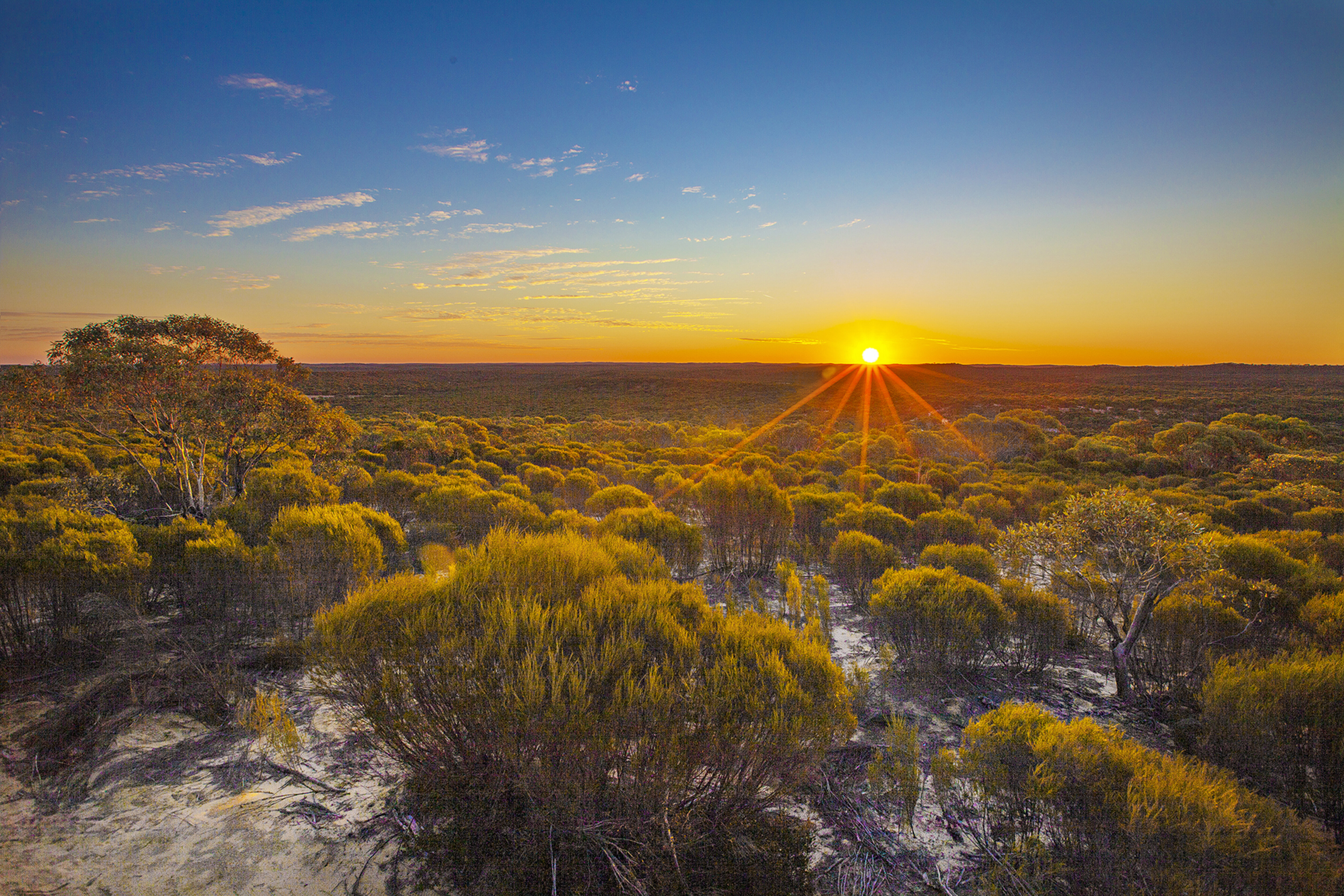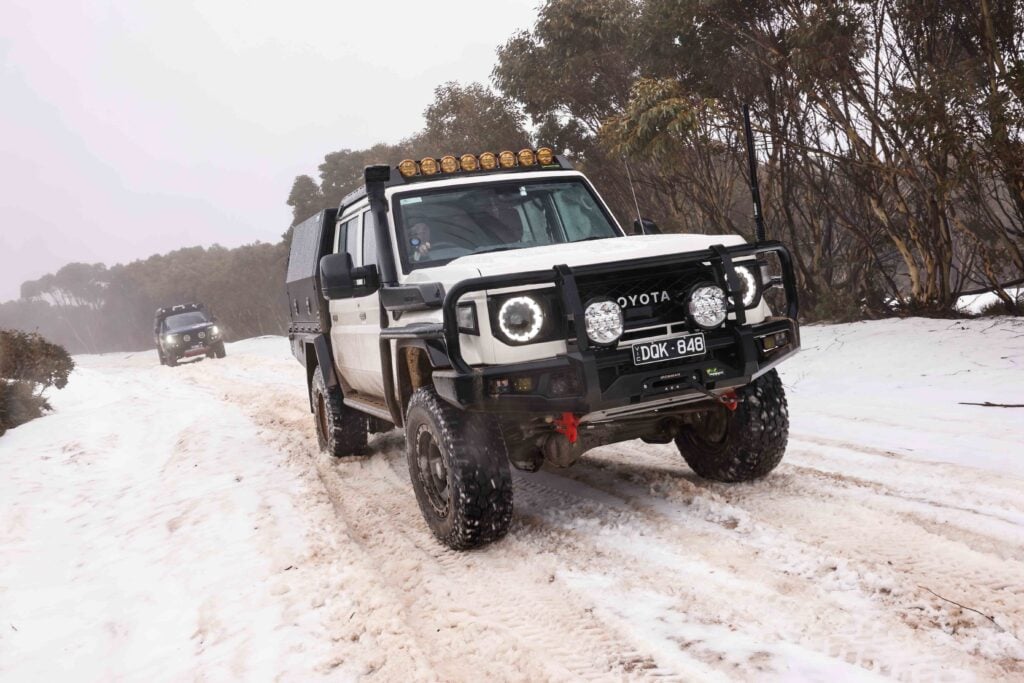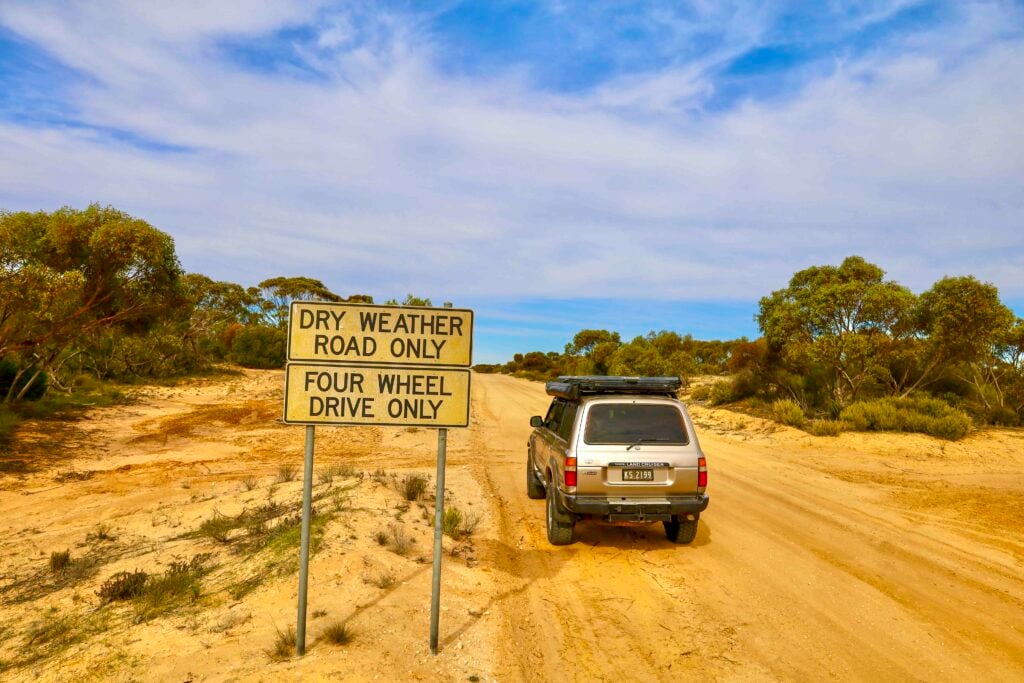The Western District town of Nhill was the starting point for this Mallee trip by members of Melbourne’s Midweek 4WD Club. The Club has an older demographic than some 4WD clubs and, as its name suggests, members generally try to avoid busy weekends and holiday periods.
With COVID having largely put the kibosh on 4×4 touring in 2020, the Mallee, only five hours’ drive from Melbourne, was the farthest some of our group had travelled for 18 months. After hitting the gravel a few kilometres out of Nhill, tyre pressures were reduced to 25 to 30psi to take the edge off the rough surface, before heading towards our camp at Big Billy Bore some 100km to the north.
After being confined to the city for so long it felt like coming home just to be back behind the wheel, travelling under a cloudless blue sky (also a rarity when you live in Melbourne!) and watching the surrounding unbroken vista of low Mallee scrub slowly slip past.
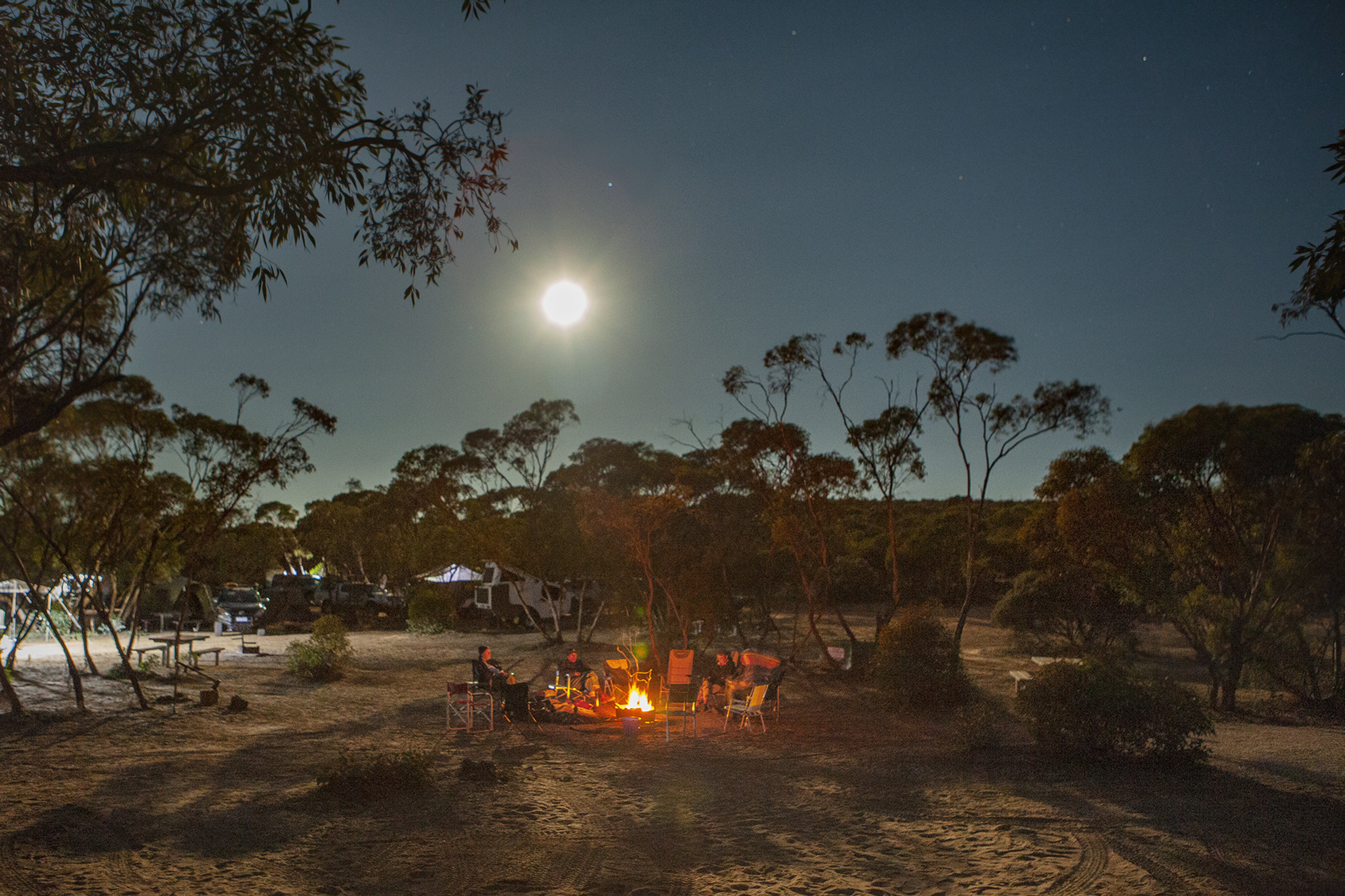
The area is a popular destination on weekends and holidays when it unfortunately attracts its fair share of ferals, being those with little regard for anyone else’s quiet enjoyment. Like the High Country, the Mallee bears scars from wanton environmental vandalism committed by rogue 4×4 and dirt-bike users whose brain power is significantly less than the horsepower under their right foot. Travelling midweek, we found Big Billy deserted, with the campground to ourselves (as it should be!) – nor did we encounter any other vehicles on the 4×4 tracks we drove over the coming three days.
Big Billy has recently had an upgrade of facilities with new toilets and showers, bore water on tap (not recommended for drinking) and a camp kitchen with gas barbecues. The campground itself is huge, with fire rings and many level, sandy campsites tucked amongst stands of Mallee trees.
As darkness encroached on the camp, a huge full moon rose in the east. This blue moon (being one of two full moons in the same month) hung low in the sky, lighting the camp almost like daylight. Each night we spent in the Mallee, the cloudless sky saw the temperature drop as night fell, plummeting from the low 20˚Cs to single digits. Most of our group were travelling with campers or ’vans and as the night wore on and people started to turn in, the deafening silence of the bush was replaced by the gentle hum of diesel heaters. By dawn the temperature was close to zero and, with little to no substantial fallen timber to be found near Big Billy, it’s a good idea to bring a supply of firewood with you.
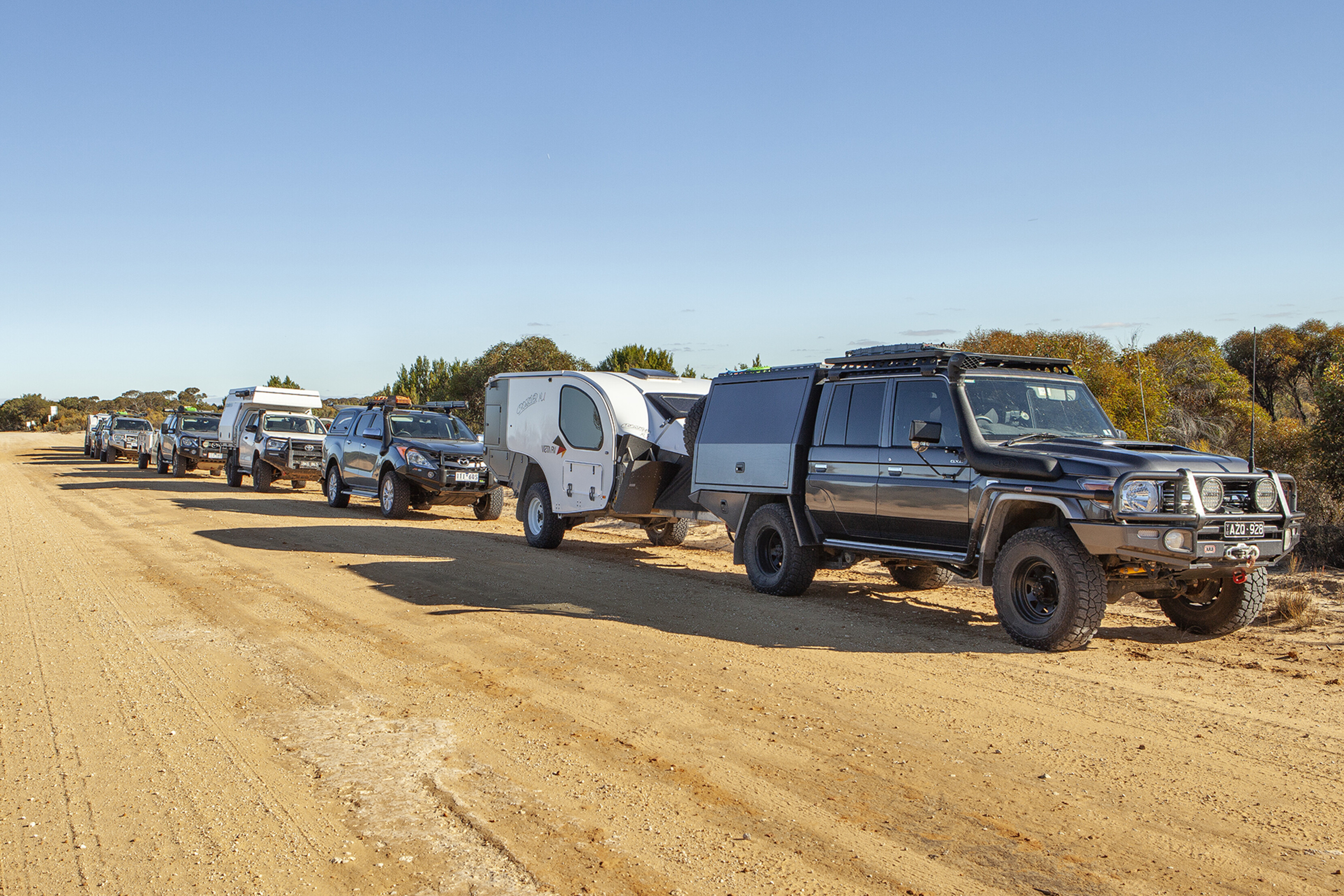
The next morning saw our eclectic group of 4x4s (a Toyota 79 Series, a couple of Hiluxes, an Isuzu, a Musso, a Patrol and a couple of Mazda BT-50s) further reduce tyre pressures to 15psi before hitting the sand. After a short drive north, we turned west off the main Nhill-Murrayville Road that divides the Park and only had to travel a couple of hundred metres to find our first small dune whose fine, white, soft, dry sand stopped some of us in our tracks. Finding that pressures had risen to 20psi as our tyres warmed, a reduction back to 15psi saw vehicles easily drive up the dunes.
The tracks, especially where they cross over dunes, are extremely scalloped by the use of excessive power on the assumption that momentum conquers all impediments – and it does, but at the cost of material discomfort, potential vehicle damage and, not least, buggering up the track surface for all those who follow.
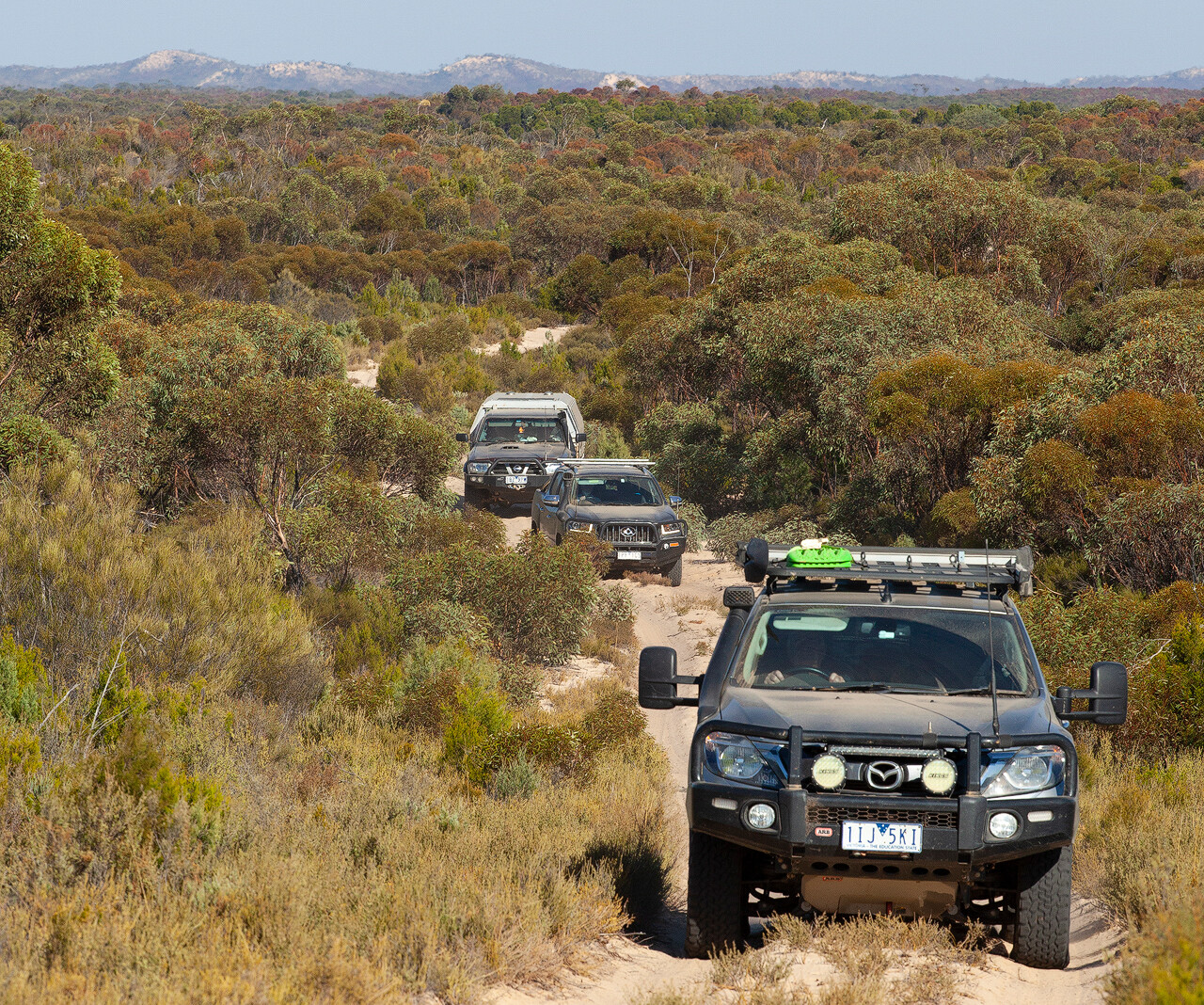
SEA OF OLIVE GREEN
At first glance the Mallee seems an uninteresting, unchanging sea of olive green stretching away in all directions. However, closer examination shows subtle variation in colour and texture. Here and there desert banksias showed off their colourful flowers, and the dead, desiccated foliage of some shrubs that had died from a recent severe drought painted splashes of ochre and red across the otherwise sea of green. Mallee trees, like snow gums, have an underground tuber that allows them to regrow after bushfire, and both can have brightly coloured bark. In the case of the Mallee, this is often a spectacular ochre colour. To survive in this challenging environment the roots of Mallee have been known to extend 30m below ground in search of water.
While numerous animal and bird tracks were evident in the sand, apart from a couple of wandering emus, the odd magpie and elusive unidentified songbirds around camp, other wildlife (including the most notable resident, the Mallee fowl) were not to be seen – probably due to the dry seasonal conditions.
Our first track passed Cactus Bore, which is nothing more than a rusted standpipe in a small clearing at the base of a tall dune. While undoubtedly named after the large stand of non-native succulents nearby, someone suggested it was certainly ‘cactus’ – not having functioned in many a year. The surrounding bush shows no signs of having been cleared or farmed so why a bore would be here in the middle of nowhere was initially a mystery.
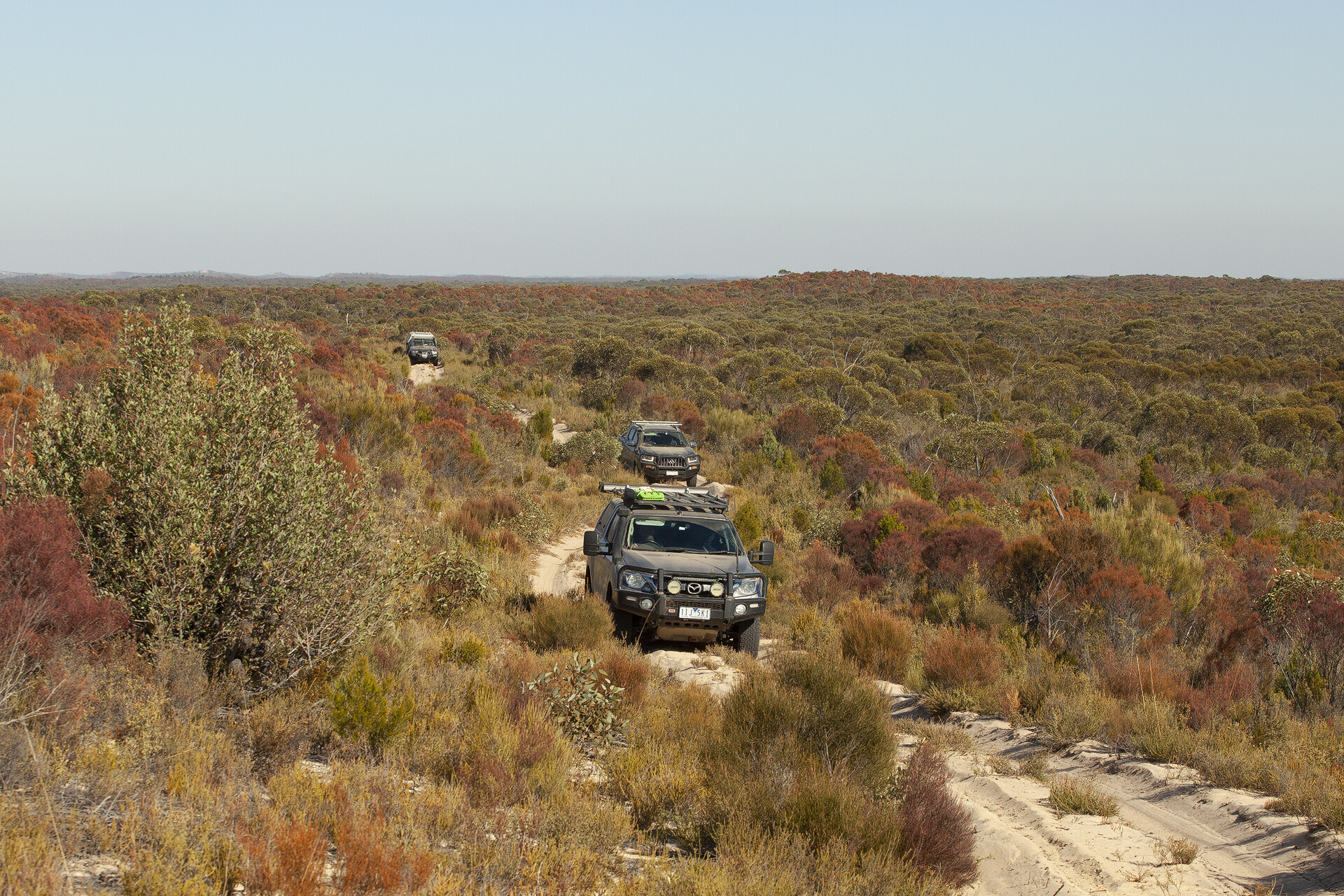
Research showed that several bores, including Big Billy, were sunk in the 1800s to water a stock route that ran south from Kow Plains (now the renamed town of Cowangie) to Nhill. While Cactus Bore wasn’t on that stock route, in times of extreme drought, local graziers facing feed shortages would turn their stock out into the scrub. The government of the day sank several bores, including Cactus Bore, to compensate for the otherwise complete lack of open ground water.
Leaving Cactus Bore, the track climbes steeply up a high dune, bringing a smile to most faces of the group; although, a couple of vehicles required more than one attempt.
Our lunch site was Red Gums campground, a large bowl-shaped depression lined on both sides by a sparse row of red gums that have seen better days. The trees are something of an anomaly, as there are no other red gums anywhere nearby. The way they formed a line suggested a long-gone semi-permanent water level from times past when the climate was wetter. Red gums can live from 500 to 1000 years, so these examples almost certainly predate European settlement, but, sadly, with no young trees in evidence and clear signs of drought stress, it seems their race is just about run and a future as firewood for campers awaits. Red Gums campground has no facilities other than a picnic table.
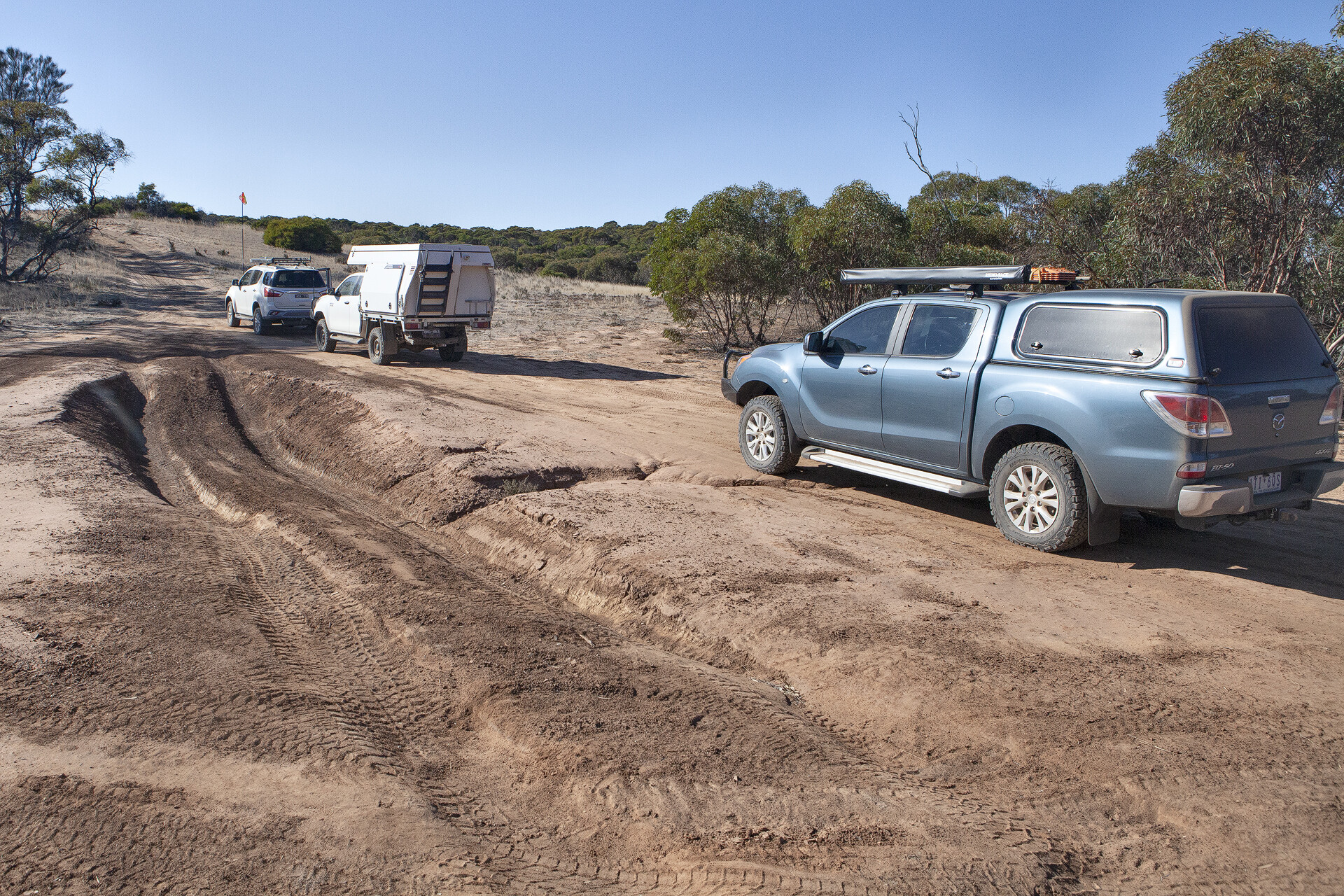
The northeastern side of the Park has areas of native pine and the scrub is noticeably taller in places, perhaps due to a different mix of sediments and sand. The pure white sand we had become accustomed to was, in parts, replaced by redder sand whose higher clay content would hold water better – an argument supported by the occasional dry bog hole found on the track. One ‘wallow’ we came across that had been gouged out over a metre deep was clearly the handiwork of the aforementioned feral community. After rain, with the hole full to ground level, it would certainly provide poetic justice to anyone thinking it was just a shallow bog they could play in with their 4×4.
Anyone looking for a challenging 4×4 climb should plan a lunch stop at White Springs. This large open area with a few scattered trees for shade and a picnic table sits at the base of a tall, sandy ridge. A lookout atop the ridge is accessed by a steep track where the soft sand makes just walking up a challenge. After a couple of attempts it became obvious that only the most capable rig with plenty of grunt and appropriate tyres would have a chance of making it to the top. All was not lost however, as a couple of hundred metres to the west we subsequently discovered another track offering easier access to the lookout.
Back at camp, there is a 300m walk to a lookout that provides expansive views over the surrounding Mallee scrub. It is especially worth a visit at sunset and sunrise to take in the delicate pastel colours that paint the sky at these times of day. The best light shows occur when there are a few streaky clouds in the sky that light up with vibrant reds, yellows and pinks with the first (or last) rays of sunlight. Budding photographers be warned that these early morning scenes can be very difficult to capture effectively with a camera (read more, below).
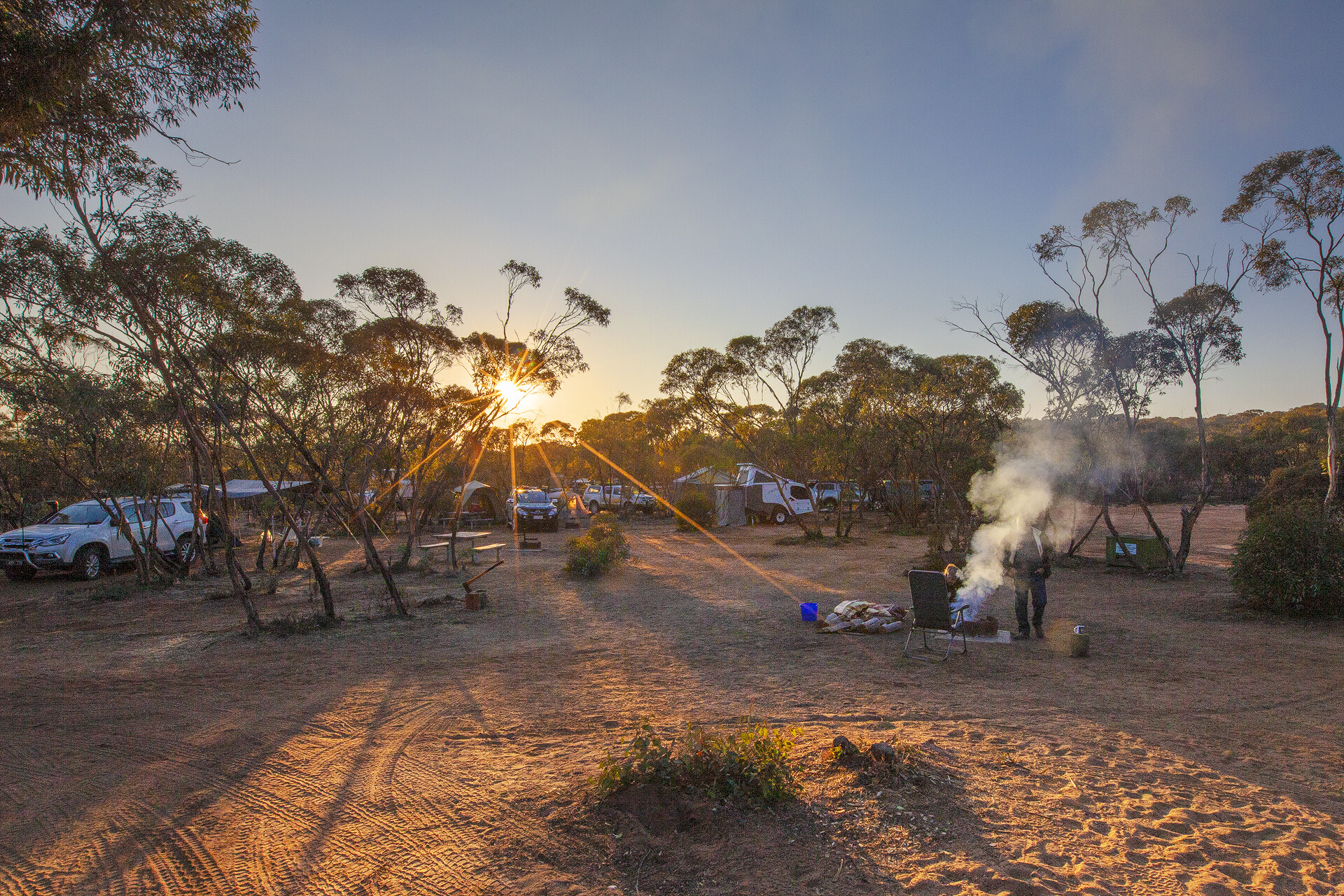
Those tired of their own burnt offerings can drive 36km north from Big Billy Bore to grab a meal at the Murrayville Pub. Fuel and other supplies can also be sourced from this small town (population 380).
Having criss-crossed almost every track north of Big Billy, our last day was spent exploring the tracks farther east and south where the terrain was more undulating and the dunes a little more challenging. At the extreme northwest of the Big Desert it is possible to cross into South Australia and pick up the one-way 90km Border Track. This route which runs south has some challenging dunes and is a popular 4×4 destination, but being one-way and slow going, a day trip from our base camp at Big Billy wasn’t a realistic option.
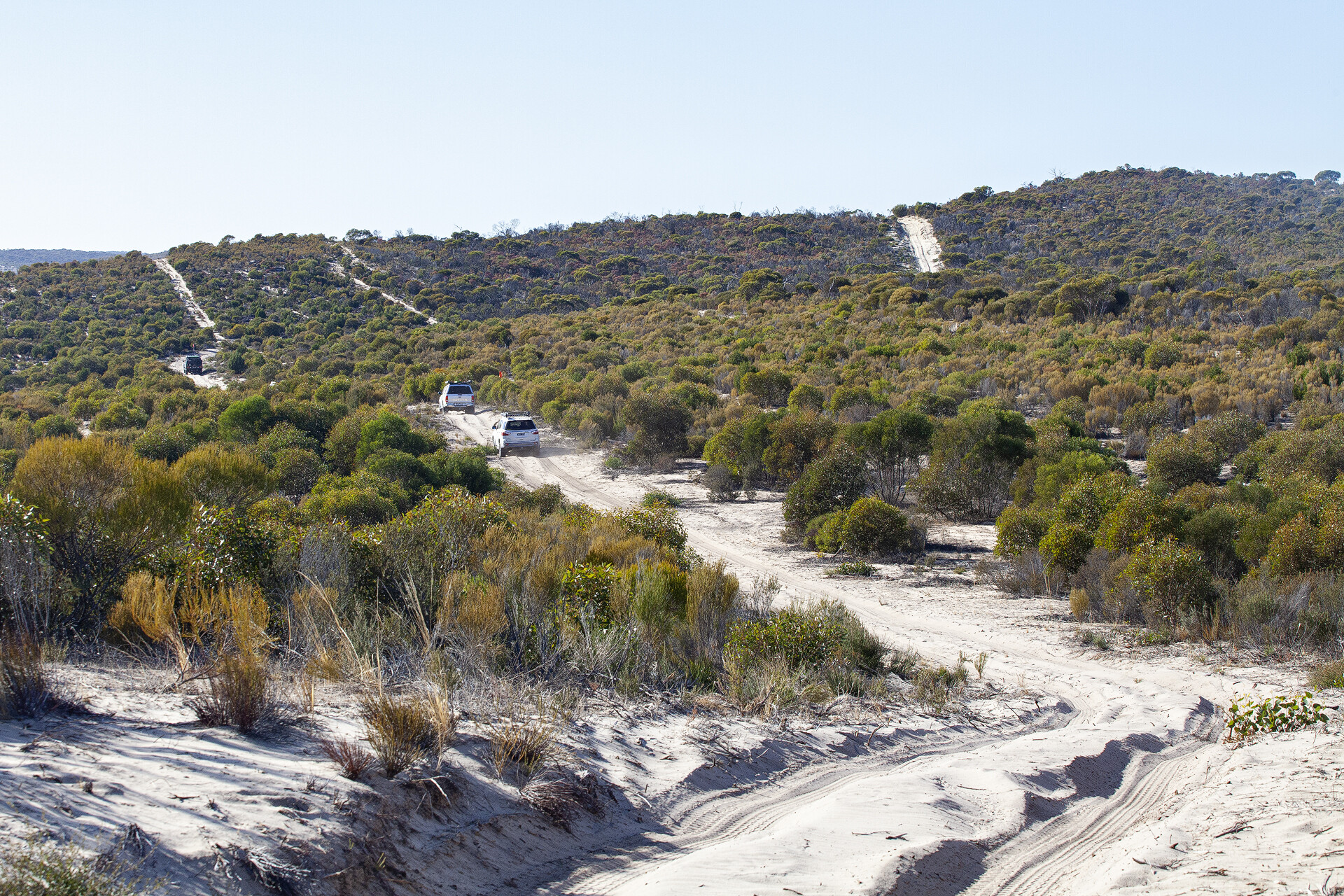
SANDY KAYS
In total, we clocked up 300km on the sand – a distance which seems even longer when you cover it at an average speed of about 20km/h. Much beyond that and you are likely to experience flight (something 4x4s have never excelled at) followed by a heavy landing. Our Mazda BT-50 was a happier beast to drive in low range, although that came at the expense of fuel consumption. While the drive up from Melbourne averaged 10.8L/100km, that jumped to 17.5L on the sand and without the extra 20L of diesel carried with us, there would have only been 5L left in the Mazda’s tank when we filled up back at Nhill (note to self: get that 150L long-range tank fitted!)
The Mallee isn’t challenging, but it does provide the experience of sand driving that isn’t readily available elsewhere in Victoria. As such it’s a great training ground to prepare for a trip across the Simpson or other deserts and get a better handle on your rig’s fuel consumption in those conditions. It’s also a great place to just kick back, sit atop a sand dune and be at one with this timeless land.
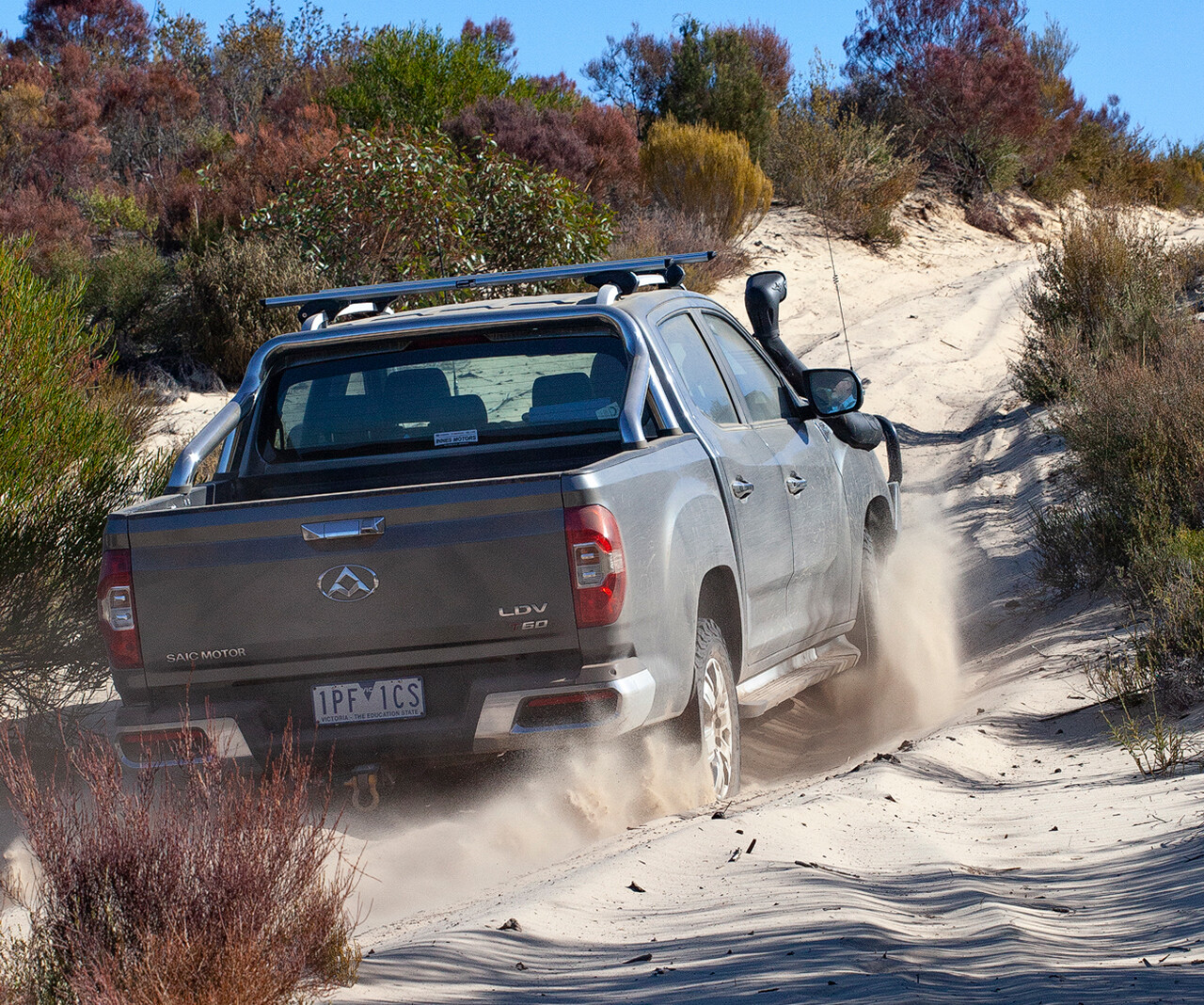
PHOTOGRAPHY LESSON
One of the most common questions about photography is why a beautiful sunset over a foreground of bush whose leaves are painted gold by the last rays of the sun can’t be adequately captured by a camera.
The human eye can see about 24 stops of light (stops are a photographic measure of light – the f4, f5.6 you may have seen on your camera, and each stop ‘sees’ twice as much light as the stop before it). The human eye almost instantly adjusts subconsciously to see detail in dark shadows and the bright sky at the same time. A camera can ‘see’ about 12 stops, so it is only half as good as the eye and it only has one exposure (not the variable exposure our eyes provide) perhaps capturing the bright sky but leaving the shadows solid black and featureless, or detail in the shadows but the sky white and without detail.
Modern cameras try to get around this problem by using HDR (High Dynamic Range) where the camera takes three images at different exposures and combines them into one. The resulting images are usually not perfect but certainly better than nothing – and getting better as technology improves.
Software like Photoshop can tease detail out of shadows or can combine two or more photos separately exposed for the sky and the shadowy foreground. But, before the images are combined, they usually need processing in Photoshop for a range of colour and detail to replicate the scene as it appeared to the human eye.
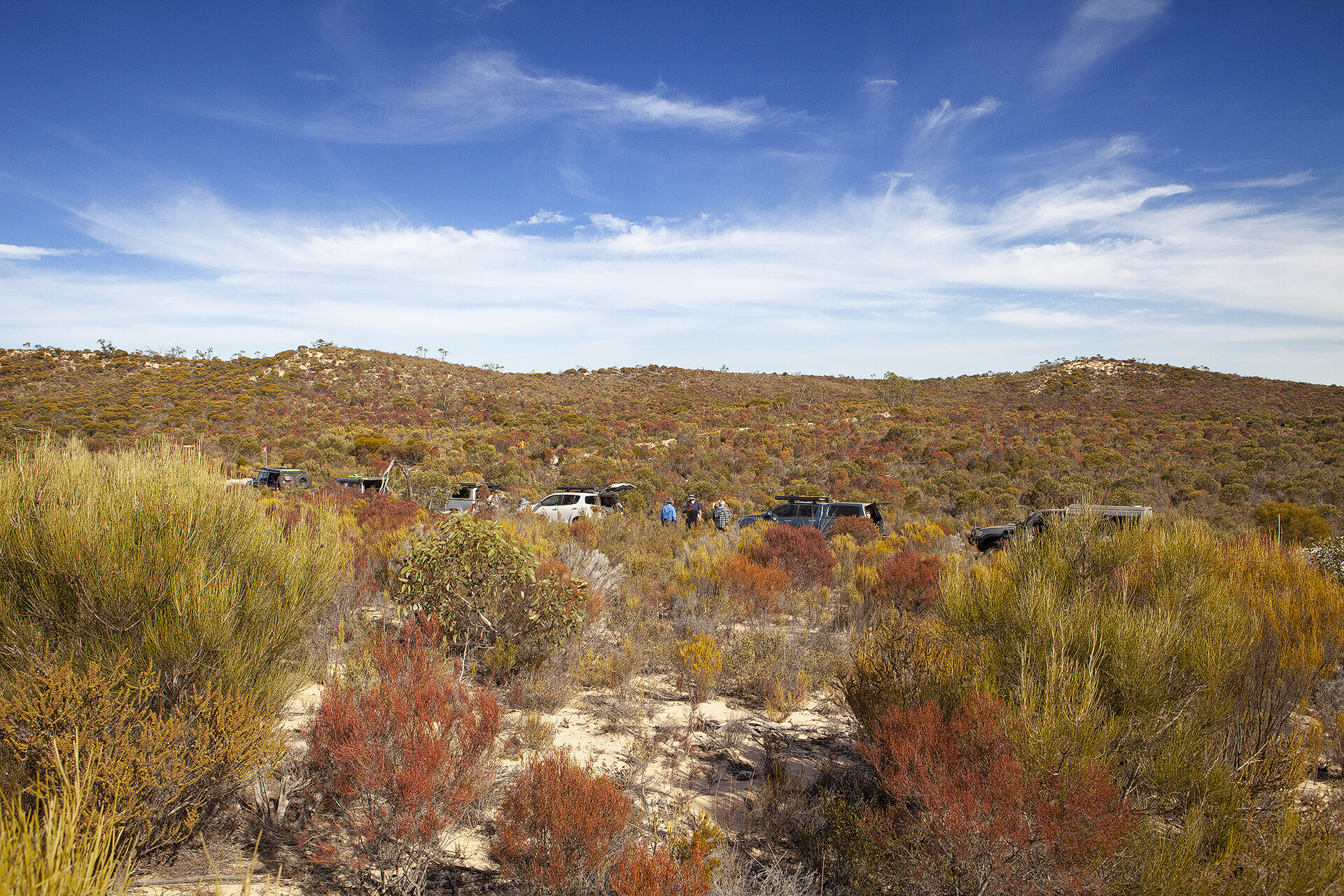
Travel Planner
WHERE Big Desert Wilderness Park is located in northwest Vic, approx. 500km from Melbourne.
WHEN TO TRAVEL In the cooler months as summer can see temperatures of 40˚C or more during the day.
STAYING THERE Big Billy Bore is the principal campground with a shower, toilet, camp kitchen (with gas barbecues) and bore water. The water is not treated and unsuitable for drinking Reduce tyre pressure on sand.
SUPPLIES Food and fuel can be found at Nhill, 100km south of Big Billy Bore, or at Murrayville, 36km to the north.
ROAD CONDITIONS The largely gravel Murrayville Track from Nhill can be rough and corrugated, depending on weather and when last graded. After heavy rain, tracks can become boggy.
MAPS Westprint: Outback Victoria. Meridian Maps: Victoria’s Deserts touring guide. A good quality paper map and a GPS are recommended.
CONTACTS Parks Victoria: Phone 13 1963. Web: http://bit.ly/bigdesert

